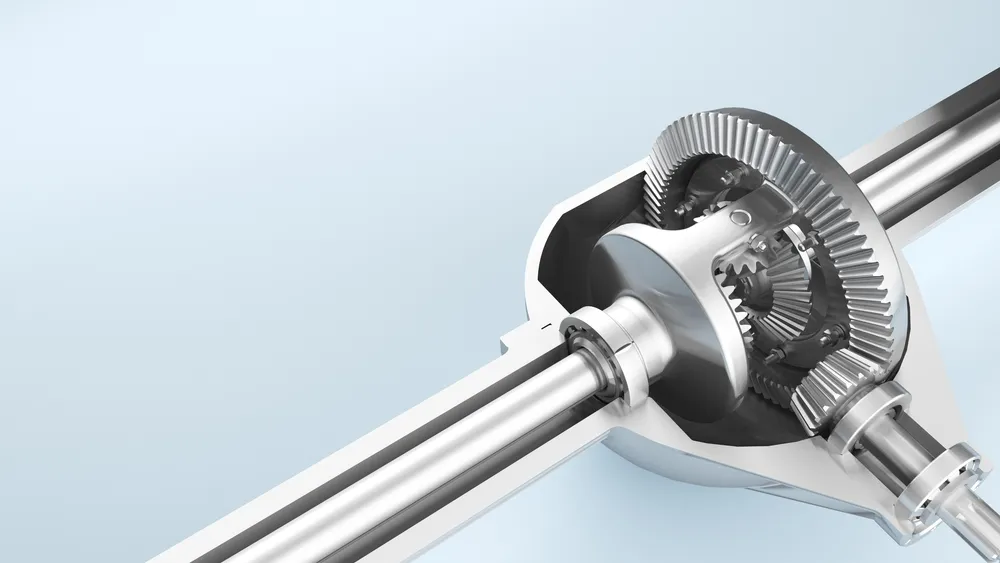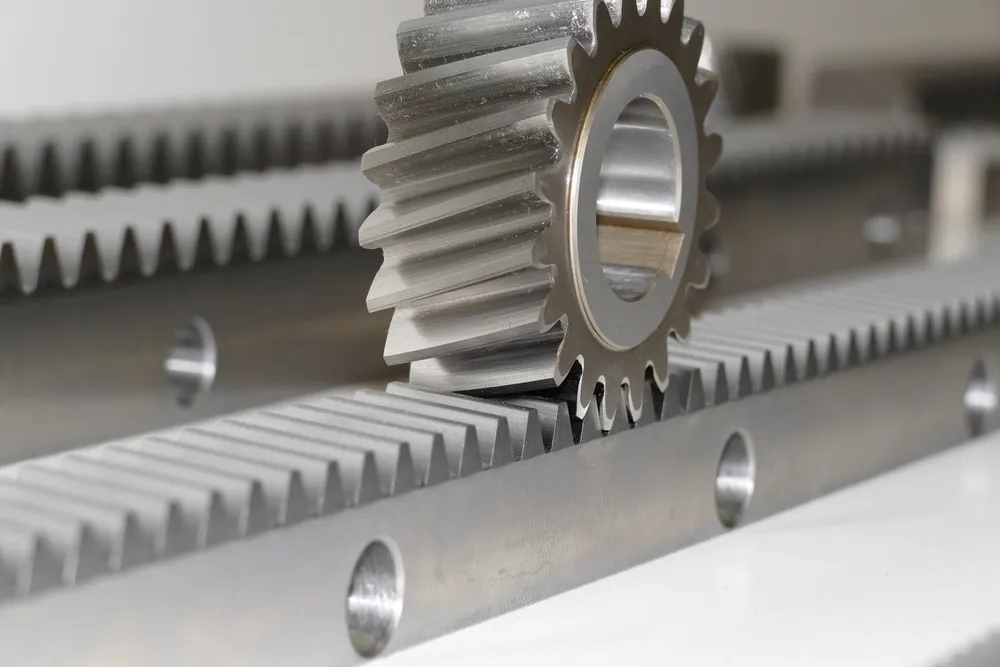In the world of automotive engineering, the development of steering systems has been pivotal in enhancing driver control and safety. Among these, the rack and pinion and gearbox steering systems stand out as two primary mechanisms employed across various vehicle types. However, in recent years, the rack and pinion system has gained prominence for its efficiency and performance advantages. This article delves into the reasons behind the growing preference for rack and pinion steering over traditional gearbox systems, illuminating its benefits through a technical lens.
Section 1: Understanding Steering Systems
Steering systems are crucial in determining a vehicle's direction, responding to driver inputs with precision. Among the several types developed, rack and pinion and gearbox (recirculating ball) systems are the most prevalent, each with unique mechanics and components.
- Rack and Pinion Steering:
- Basic Mechanics: This system converts the rotational motion of the steering wheel into the linear motion needed to turn the wheels. It features a circular gear (pinion) at the end of the steering shaft that engages teeth on a linear gear (rack), moving it left or right to steer the vehicle.
- Key Components: The simplicity of the rack and pinion system lies in its few components: the pinion gear, the rack, tie rods, and the steering shaft. This simplicity contributes to a host of advantages over more complex systems.
- Gearbox Steering System:
- Basic Mechanics: Also known as the recirculating ball system, it amplifies the driver's steering input through a gearbox. This system uses a series of linkages and a gearbox to direct the vehicle's wheels, with the gearbox allowing for easier steering of heavier vehicles.
- Key Components: Central to this system are the steering box, sector shaft, worm gear, and recirculating balls that facilitate smoother and less effortful movement of the gear shaft.
Section 2: Advantages of Rack and Pinion Steering
The shift towards rack and pinion systems in modern vehicles underscores its superiority in several key areas:
- 1. Improved Steering Precision and Responsiveness: The direct engagement between the pinion and the rack ensures minimal play and loss of motion, offering unmatched precision. This is particularly evident in handling sharp turns and navigating curves, where the system's responsiveness enhances the driving experience.
- 2. Simpler and Lighter Design: The rack and pinion system's compactness not only saves space but also reduces the overall weight of the vehicle. This weight reduction plays a significant role in improving fuel efficiency and performance, making the system a staple in smaller, performance-oriented cars.
- 3. Reduced Steering Ratio: Typically, rack and pinion systems feature a lower steering ratio compared to gearbox systems, translating to faster steering response. This means drivers can turn the wheels more with less steering wheel rotation, providing a sportier and more engaging driving feel.
- 4. Lower Maintenance Requirements: With fewer moving parts than gearbox systems, rack and pinion steering systems inherently require less maintenance. This reliability stems from the system's design simplicity, which eliminates common points of failure associated with the complex linkages in gearbox systems.
- 5. Enhanced Driver Feedback: The mechanical efficiency of the rack and pinion system ensures that more road feel is transmitted to the driver, a crucial factor for performance driving and everyday safety. This direct feedback allows drivers to make more informed decisions about speed and steering, contributing to a safer driving environment.
Section 3: Application and Evolution
The widespread adoption of rack and pinion steering in modern vehicles is not merely a trend but a reflection of its superior performance and design efficiency. This system's versatility is evident across various automotive categories, demonstrating its effectiveness in enhancing driver control and vehicle responsiveness.
- Economy Cars: In compact and mid-size vehicles, the space-saving design and weight reduction benefits of rack and pinion steering are particularly valuable. These advantages contribute to improved fuel efficiency and lower production costs, making it an ideal choice for economy cars.
- Sports Cars: The precise steering control and enhanced feedback provided by rack and pinion systems are critical for high-performance sports cars. Drivers benefit from the immediate response and tight handling, essential for navigating at high speeds and during competitive racing.
- SUVs and Light Trucks: While gearbox systems were traditionally preferred for heavier vehicles due to their durability under load, advancements in rack and pinion technology, including reinforced designs and power assistance, have extended its application to SUVs and light trucks. These improvements offer a balance of efficiency and robustness, catering to the demands of larger vehicles.
The evolution of rack and pinion steering has been significantly influenced by the integration of power assistance technologies. Hydraulic power steering systems were among the first to enhance the ease of operation, reducing the physical effort required to steer the vehicle. More recently, electric power steering (EPS) has emerged as a more energy-efficient solution, further refining the system's performance with precise electronic control, improving fuel economy, and reducing emissions.
Section 4: Considerations and Trade-offs
Despite the clear advantages of rack and pinion steering, it's crucial to recognize scenarios where gearbox steering systems, with their robust construction and suitability for heavy-duty applications, may still be preferable. For instance, in industrial vehicles and some heavy-duty trucks, the high load tolerance of gearbox systems can offer reliability and durability that rack and pinion systems might not sustain under extreme conditions.
However, for the majority of passenger vehicles and light commercial applications, the benefits of rack and pinion steering—ranging from improved precision and handling to lower maintenance requirements—make it a superior choice. It's important for vehicle manufacturers and consumers alike to consider these trade-offs when selecting or purchasing a vehicle, balancing performance needs with operational demands.
The rack and pinion steering system represents a significant advancement in automotive engineering, offering a blend of performance, efficiency, and reliability that traditional gearbox systems struggle to match. Its advantages in steering precision, responsiveness, and driver feedback make it a preferred choice for a wide range of vehicles, from compact cars to performance-oriented sports cars. As automotive technology continues to evolve, the role of rack and pinion steering in future designs seems not only assured but pivotal, driving forward innovations in vehicle control and safety.
FAQs
To further aid understanding, here are answers to some common questions regarding rack and pinion versus gearbox steering systems:
- Q: Can rack and pinion steering be repaired or must it be replaced when issues arise?
- A: Many issues with rack and pinion steering can be repaired, such as leaks or worn seals. However, significant damage may require replacement of the entire unit.
- Q: How do I know if my vehicle has a rack and pinion or a gearbox steering system?
- A: Most modern vehicles use rack and pinion steering, but you can verify by checking your vehicle's manual or inspecting the steering system components. Gearbox systems typically have a more complex linkage and a visible steering box.
- Q: Is there a significant cost difference between maintaining rack and pinion and gearbox steering systems?
- A: Generally, rack and pinion systems are lower in maintenance costs due to their simpler design and fewer moving parts. However, the cost can vary depending on the vehicle model and the nature of any repairs.

